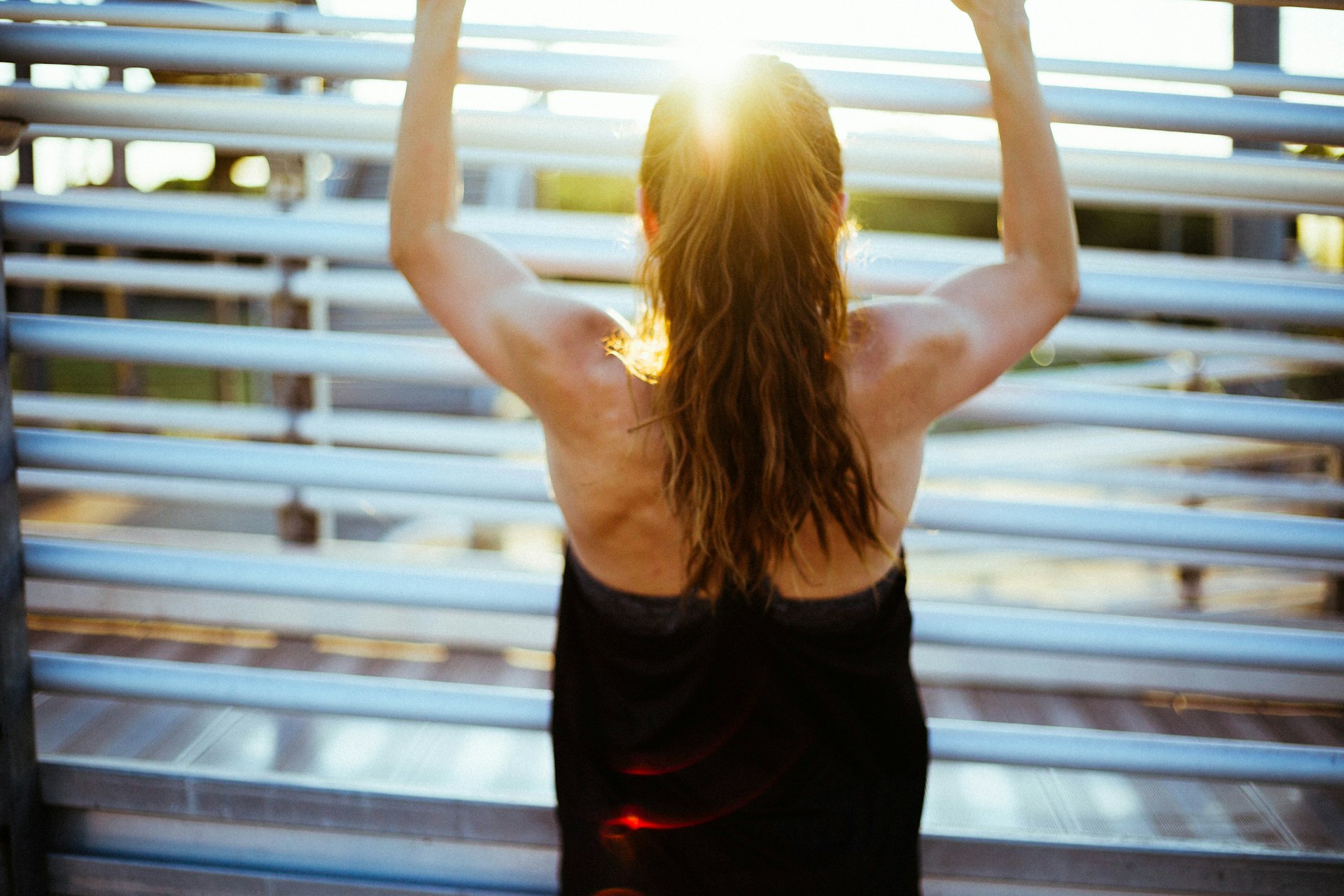Revolutionizing Endurance: How Wearable Oxygen Sensors Transform Athletic Performance

Photo by Angie Conti on Unsplash
Introduction: Wearable Oxygen Sensors Reshape Endurance Training
In recent years, wearable oxygen sensors have emerged as a transformative technology for endurance athletes. By providing real-time data on oxygen saturation levels in the body, these devices enable athletes and coaches to monitor physiological responses during training and competition. This innovation delivers actionable insights that support performance optimization, injury prevention, and personalized training strategies, making it a cornerstone of modern sports science. [1]
Understanding Wearable Oxygen Sensors
Wearable oxygen sensors are compact, non-invasive devices designed to measure the percentage of oxygen-saturated hemoglobin in the blood or muscle tissue. Most commonly, these sensors utilize light-based technology such as pulse oximetry to provide continuous and accurate readings during physical activity. Devices can be worn on the wrist, finger, or integrated into smart clothing and chest straps. This makes them highly accessible and practical for use in both training and competitive settings. [5]
Key Benefits for Endurance Athletes
1. Performance Evaluation and Real-Time Feedback
Wearable oxygen sensors deliver immediate feedback on how efficiently the body is transporting and utilizing oxygen during exercise. This data allows for precise assessment of aerobic capacity and muscular oxygenation, helping athletes identify their physiological limits and make informed decisions about pacing and effort. Real-time monitoring eliminates guesswork and supports on-the-fly adjustments, leading to more effective and safer training sessions. [1] [2]
2. Enhancing Endurance and Training Efficiency
Endurance sports-such as marathon running, cycling, and triathlon-require optimal oxygen delivery to working muscles. By tracking oxygen saturation throughout workouts, athletes can tailor their training intensity to stay within zones that promote aerobic development without overreaching. This approach supports gradual, sustainable improvements in endurance, enabling athletes to train smarter rather than just harder. [1]
3. Preventing Overtraining and Injury
One of the most valuable applications of wearable oxygen sensors is the early detection of overtraining and muscle fatigue. Declines in oxygen saturation levels over time may indicate excessive training load or insufficient recovery. By identifying these trends, athletes can schedule rest days or modify their routines to prevent burnout and reduce the risk of injury. This proactive approach helps maintain long-term health and performance. [3] [2]
4. Personalized Training and Recovery
Data from wearable oxygen sensors can inform highly individualized training programs. Coaches and athletes can analyze oxygenation patterns to pinpoint strengths and weaknesses, customizing workouts to target specific physiological adaptations. Post-exercise measurements also reveal how quickly muscles recover, allowing for data-driven adjustments to recovery protocols. This level of personalization maximizes training efficiency and minimizes the risk of stagnation. [1]
5. Sleep Quality and Overall Wellness Monitoring
Some wearable devices offer round-the-clock oxygen saturation tracking, including during sleep. Consistent drops in nighttime oxygen levels may signal sleep disturbances or potential health issues, such as sleep apnea. For endurance athletes, monitoring sleep-related oxygen patterns can reveal the impact of fatigue, illness, or medication, leading to more informed decisions about recovery and lifestyle adjustments. [4]
Practical Implementation: Steps for Integrating Wearable Oxygen Sensors into Training
To fully leverage the benefits of wearable oxygen sensors, consider the following step-by-step approach:
- Research and Select a Device: Choose a wearable oxygen sensor that suits your sport, comfort preferences, and data needs. Look for devices with proven accuracy and ease of use. Consider whether you need wrist-based, finger, or smart clothing integration. [5]
- Establish Baselines: Use the device during rest, various training intensities, and recovery periods to establish your normal oxygen saturation ranges. This allows you to detect deviations that may signal fatigue or health issues.
- Monitor in Real Time: During workouts, regularly check your oxygen saturation data. Adjust intensity, duration, or rest intervals as needed to stay within optimal zones for endurance development and recovery.
- Analyze Post-Session Data: After training, review trends in your oxygenation levels. Share data with coaches or trainers to refine your training plan and monitor your progress over time.
- Incorporate Sleep and Recovery Tracking: Use devices that monitor oxygen saturation overnight to gain insights into your sleep quality and overall wellness.
- Consult Professionals for Data Interpretation: If you notice consistent abnormalities or have questions about your data, consult with sports scientists or healthcare professionals for expert interpretation and advice.
Real-World Applications and Case Studies
Elite endurance athletes and sports teams increasingly rely on wearable oxygen sensors for competitive advantage. For example, marathon runners use these devices to assess their oxygenation status at different race stages, adjusting pacing to avoid hitting “the wall.” Cyclists training at altitude monitor SpO2 levels to gauge adaptation and optimize acclimatization strategies. [3]
During the COVID-19 pandemic, wearable oxygen sensors gained broader appeal for early detection of respiratory issues in both athletes and the general population. This expanded use highlighted their value beyond sports, supporting wellness and remote health monitoring for individuals with chronic conditions.

Photo by Dirk Erasmus on Unsplash
Challenges and Limitations
Despite their advantages, wearable oxygen sensors have some limitations. Environmental factors (such as extreme temperatures or high humidity) can affect accuracy. Movement artifacts-for example, rapid arm swings during running-may also disrupt data collection. Not all devices provide the same level of precision, and interpretation of data requires a basic understanding of exercise physiology.
Furthermore, while wearable oxygen sensors are valuable for trend analysis and training adjustments, they should not replace professional medical advice for diagnosing or managing health conditions. Athletes are encouraged to use these tools as part of a holistic training and wellness strategy.
Alternative and Complementary Approaches
In addition to oxygen saturation monitoring, athletes can benefit from other wearable technologies such as heart rate monitors, hydration sensors, and sleep trackers. Combining multiple metrics offers a more comprehensive picture of readiness, fatigue, and adaptation. For example, integrating heart rate variability (HRV) data with oxygen saturation trends enhances training decisions and recovery planning. [5]
How to Access and Implement Wearable Oxygen Sensor Technology
To acquire a wearable oxygen sensor, athletes can:
- Visit reputable sports technology retailers or online marketplaces. When choosing a product, review user ratings, manufacturer credentials, and return policies.
- Consult with sports science labs or athletic trainers for recommendations on validated devices.
- For integration in team settings, work with sports performance consultants who can design customized monitoring and training programs.
- If you are uncertain about which device to select or how to interpret the data, consider contacting your national sports federation, professional coaching association, or a certified sports medicine provider for guidance.
It is advisable to search for “FDA-cleared wearable oxygen sensor” or “validated sports oximeter” in your preferred search engine to identify products that meet established accuracy standards. Always verify device compatibility with your current training applications or platforms.
Summary: Maximizing the Value of Wearable Oxygen Sensors in Endurance Sports
Wearable oxygen sensors offer powerful, actionable insights for endurance athletes seeking to optimize training, prevent injury, and enhance recovery. By providing individualized data on oxygen utilization, these devices support smarter, evidence-based approaches to peak performance. While not a substitute for professional medical advice, they are a valuable addition to any endurance athlete’s toolkit. For further information and device recommendations, consult sports technology specialists or certified athletic trainers.
References
- [1] Train.Red (2023). Benefits of Muscle Oxygen Sensors for Sports: Monitoring Oxygen Saturation in Muscles.
- [2] Train.Red (2023). Measure Your Muscle Fatigue with Muscle Oxygen Sensors.
- [3] Meegle (2023). Wearable Tech For Oxygen Tracking.
- [4] TrainRight (2023). Pulse Oximetry for Athletes: Using Oxygen Saturation as a Training Tool.
- [5] CAS Insights (2023). Sensors Drive Better Safety and Performance.



